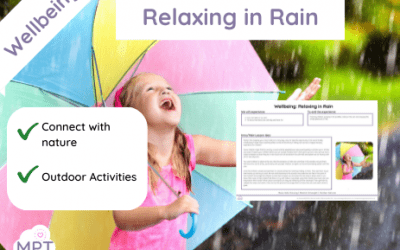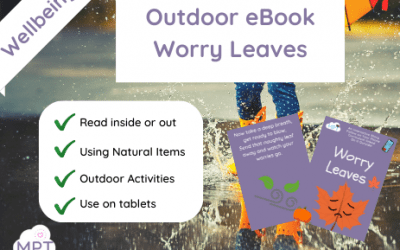Mud Kitchen: Spring Silly Soup Range ⇒Use the Mud Kitchen: Spring Soup from the Silly Soup range to help implement a...
Mud Kitchen: Happy Herb Silly Soup
Sep 10, 2021
Mud Kitchen: Happy Herbs Silly Soup Range ⇒Use the Mud Kitchen: Happy Herbs Soup from the Silly Soup range to help...
Muddy Kitchen: Marvellous Mud Soup Range
Sep 10, 2021
The Benefits of Mud Kitchens: Unleashing Creativity and Learning in Children Mud kitchens have become a popular...
Mud Kitchen: Dippy Dino Silly Soup Recipe
Sep 10, 2021
Mud Kitchen: Dippy Dino Silly Soup Range ⇒Use the Mud Kitchen: Dippy Dino Soup from the Silly Soup range to help...
Mud Kitchen: Cracking Conker Silly Soup Recipe
Sep 10, 2021
Mud Kitchen: Cracking Conker Soup ⇒Use the Mud Kitchen: Cracking Conker Soup from the Silly Soup range to help...
Wishful Walking
Sep 8, 2021
Wellbeing: Wishful Walking ⇒Use the Wishful Walking Lesson Plan to help children clear their minds and learn to calm...
Shade Slumbers (Wellbeing)
Sep 8, 2021
Wellbeing: Shade Slumbers ⇒Use the Shade Slumbers Activities to help children use the most simple gifts of nature to...
Supercharging Sticks (Wellbeing)
Sep 8, 2021
Wellbeing: Supercharging Sticks ⇒Use the Supercharging Stick Activities to help active and physical children find a...
Stone Serenity (Wellbeing)
Sep 8, 2021
Wellbeing: Serenity Stones ⇒Use the Serenity Stones to help children use nature to transfer negative energy. A...
Petal Power (Wellbeing)
Sep 8, 2021
Wellbeing: Leaf Love ⇒Use the Petal Power to take you back to your own childhood and use the holistic joys of making...
Leaf Love (Wellbeing)
Sep 8, 2021
Wellbeing: Leaf Love ⇒Use the Leaf Love to help children have a method to help them connect with nature. Connecting to...
Relaxing in the Rain (Wellbeing)
Sep 8, 2021
Wellbeing: Relaxing in the Rain ⇒Use the Relaxing in the Rain lesson plan to make the most of outdoor learning. Do...
Mindful Mud (Wellbeing)
Sep 8, 2021
Wellbeing: Mindful Mud ⇒Use the Mindful Mud method and let mud and mess make you all feed good! ⇒Single Lesson Plan We...
Worry Leaves (Outdoor eBook)
Sep 7, 2021
Worry Leaves ⇒This eBook can be read outdoors in indoors, with tasks to do outdoors after ⇒Single Text We will...
Wellbeing: Puddle Pondering
Sep 2, 2021
Puddle Pondering is a fabulous way to get your sillies out. Being silly is extremely important for children to be...
Wellbeing : Clearing Cloudy Minds
Sep 2, 2021
Clearing cloudy minds and being mindful is imperative in all of our lives. We lead busy, fast-paced lives and...
Super Positive Power Leaves
Sep 1, 2021
Super Positive Power Leaves Play 'Super Positive Power Leaves' and end your lesson on a high. ?Ask the children to...
Well-being: Worry Leaves
Sep 1, 2021
Worry Leaves This lesson plan will cover the following objectives: A chance to talk and be open with our feelings. To...
New In

Local History Study

British Settlement by Anglo-Saxons and Scots Lesson Ideas

5 Sustainable Wreath Making Ideas

The Roman Empire KS2

Iron Age Hill Forts and Tribal Societies

The Transition to Farming and Settled Communities (Neolithic)

Stone Age Recipes

Life in the Stone Age Lesson Ideas

Stone Age Foraging Worksheet




















